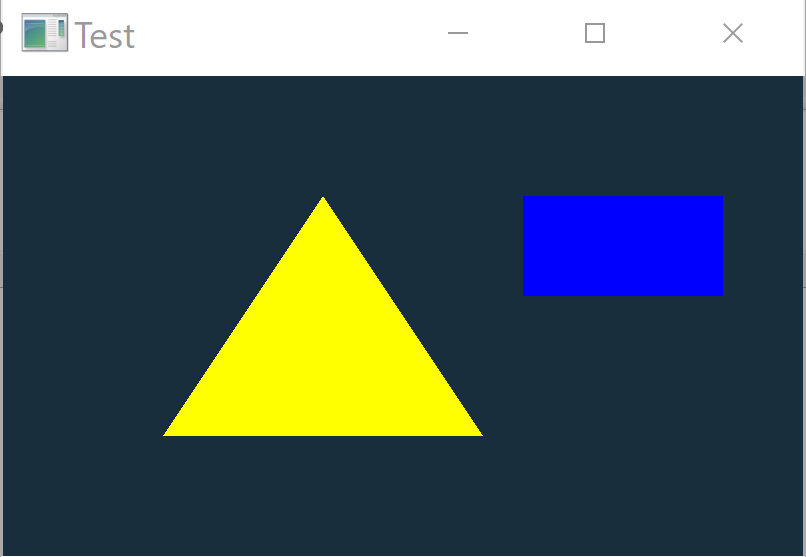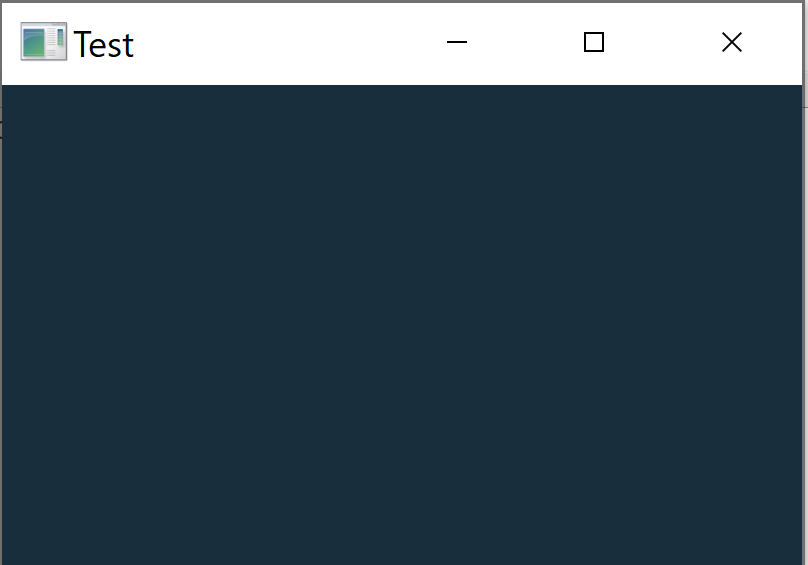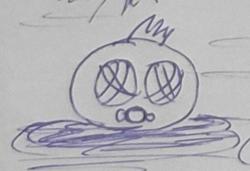I am trying to improve my test program about Direct3D 11 in 2D, without any additional library (see https://stackoverflow.com/q/71772545/688348).
Now, what I want to do is to rotate the content (client) area of the window. The GDI part is working, but not the D3D one. The function d3d_resize() takes an argument named rot and, according to its value (0, 1, 2 or 3), I want to rotate the client area.
For now, I focus on rot == 0, that is no rotation.
I use a constant buffer to store the rotation matrix, defined (mathematically) like this:
|r11 r12 t1|
|r21 r22 t2|
where the sub-matrix (r) is the rotation part, and the sub-vector (t) is the translation.
So for rot == 0, the matrix is basically the identity matrix + no translation. If `(x,y)` is my 2D vector, I expand it with 1 to take into account the translation, hence:
|1 0 0| |x| |x|
|0 1 0| * |y| = |y|
|1|
that is, what I want if rot == 0. My C part for the rotation is:
typedef struct
{
float rotation[2][3]; /* rotation + translation */
float dummy[2]; /* for 16 bytes padding */
} Const_Buffer;
void d3d_resize(D3d *d3d, int rot, UINT width, UINT height)
{
/* snip */
switch (rot)
{
case 0:
((Const_Buffer *)mapped.pData)->rotation[0][0] = 1.0f;
((Const_Buffer *)mapped.pData)->rotation[0][1] = 0.0f;
((Const_Buffer *)mapped.pData)->rotation[0][2] = 0.0f;
((Const_Buffer *)mapped.pData)->rotation[1][0] = 0.0f;
((Const_Buffer *)mapped.pData)->rotation[1][1] = 1.0f;
((Const_Buffer *)mapped.pData)->rotation[1][2] = 0.0f;
break;
case 1:
((Const_Buffer *)mapped.pData)->rotation[0][0] = 0.0f;
((Const_Buffer *)mapped.pData)->rotation[0][1] = -1.0f;
((Const_Buffer *)mapped.pData)->rotation[0][2] = 2.0f;
((Const_Buffer *)mapped.pData)->rotation[1][0] = 1.0f;
((Const_Buffer *)mapped.pData)->rotation[1][1] = 0.0f;
((Const_Buffer *)mapped.pData)->rotation[1][2] = 0.0f;
break;
case 2:
((Const_Buffer *)mapped.pData)->rotation[0][0] = -1.0f;
((Const_Buffer *)mapped.pData)->rotation[0][1] = 0.0f;
((Const_Buffer *)mapped.pData)->rotation[0][2] = 0.0f;
((Const_Buffer *)mapped.pData)->rotation[1][0] = 0.0f;
((Const_Buffer *)mapped.pData)->rotation[1][1] = -1.0f;
((Const_Buffer *)mapped.pData)->rotation[1][2] = 0.0f;
break;
case 3:
((Const_Buffer *)mapped.pData)->rotation[0][0] = 0.0f;
((Const_Buffer *)mapped.pData)->rotation[0][1] = 1.0f;
((Const_Buffer *)mapped.pData)->rotation[0][2] = 0.0f;
((Const_Buffer *)mapped.pData)->rotation[1][0] = -1.0f;
((Const_Buffer *)mapped.pData)->rotation[1][1] = 0.0f;
((Const_Buffer *)mapped.pData)->rotation[1][2] = 2.0f;
break;
}
/* snip */
}
The vertex shader is:
cbuffer cv_viewport : register(b0)
{
float2x3 rotation_matrix;
}
struct vs_input
{
float2 position : POSITION;
float4 color : COLOR;
};
struct ps_input
{
float4 position : SV_POSITION;
float4 color : COLOR;
};
ps_input main_vs(vs_input input )
{
ps_input output;
float2 p = input.position;
p = mul(rotation_matrix, float3(input.position, 1.0f));
output.position = float4(p, 0.0f, 1.0f);
output.color = input.color;
return output;
}
I used Visual Studio graphic debugger to check for the const buffer values when rot == 0 and they seem correct.
but nothing is displayed when rot == 0. If I comment the line where the multiplication is done, the content is displayed. I've done something wrong but I don't know what and where. Find below the link to the complete C code + the shader code in my github (it is too large to be posted inline)
C code: https://github.com/vtorri/d3d_rot/blob/master/d3d_rot.c
shader code: https://github.com/vtorri/d3d_rot/blob/master/shader_3.hlsl









